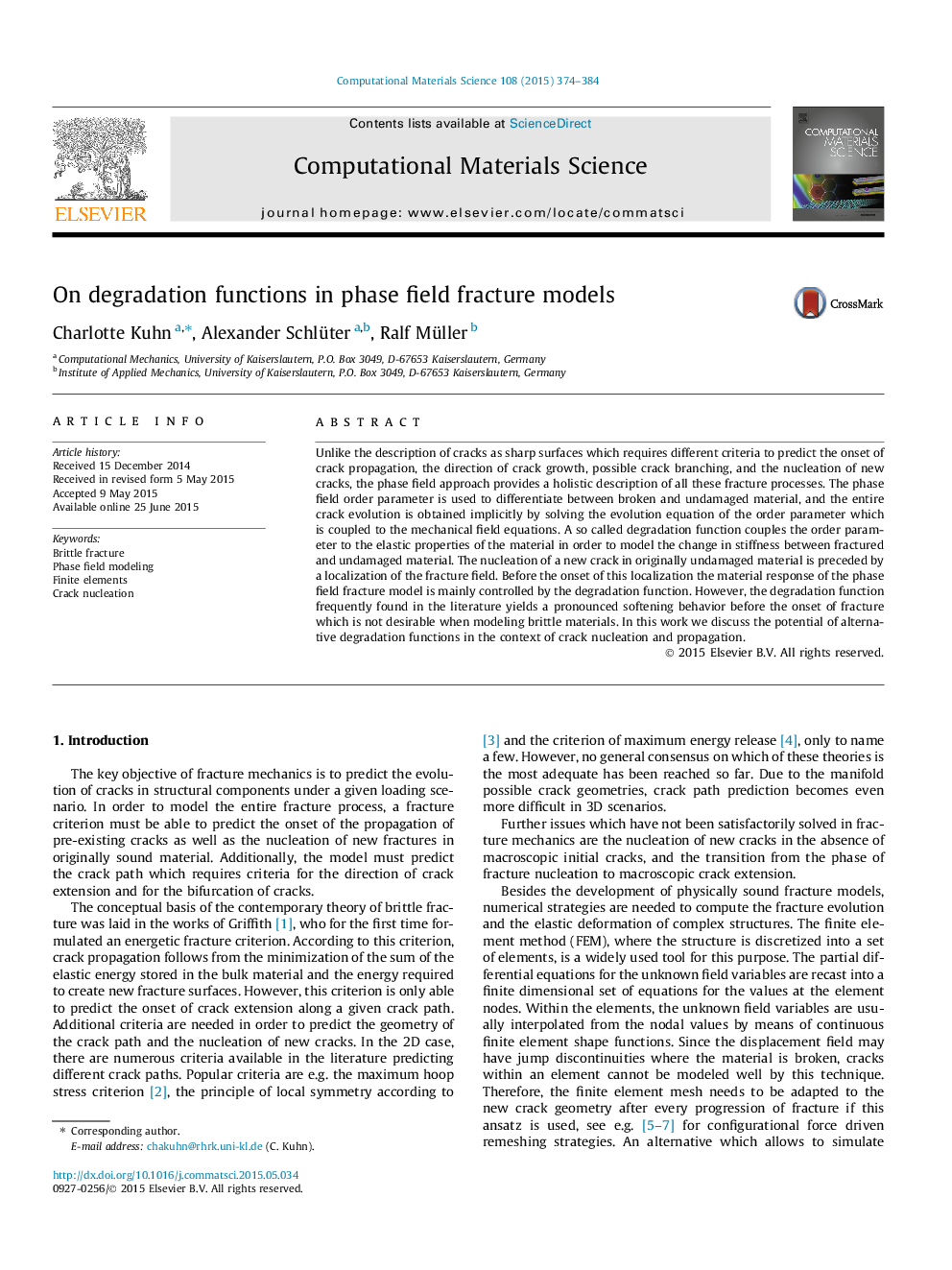| Article ID | Journal | Published Year | Pages | File Type |
|---|---|---|---|---|
| 1560148 | Computational Materials Science | 2015 | 11 Pages |
Abstract
Unlike the description of cracks as sharp surfaces which requires different criteria to predict the onset of crack propagation, the direction of crack growth, possible crack branching, and the nucleation of new cracks, the phase field approach provides a holistic description of all these fracture processes. The phase field order parameter is used to differentiate between broken and undamaged material, and the entire crack evolution is obtained implicitly by solving the evolution equation of the order parameter which is coupled to the mechanical field equations. A so called degradation function couples the order parameter to the elastic properties of the material in order to model the change in stiffness between fractured and undamaged material. The nucleation of a new crack in originally undamaged material is preceded by a localization of the fracture field. Before the onset of this localization the material response of the phase field fracture model is mainly controlled by the degradation function. However, the degradation function frequently found in the literature yields a pronounced softening behavior before the onset of fracture which is not desirable when modeling brittle materials. In this work we discuss the potential of alternative degradation functions in the context of crack nucleation and propagation.70
Related Topics
Physical Sciences and Engineering
Engineering
Computational Mechanics
Authors
Charlotte Kuhn, Alexander Schlüter, Ralf Müller,
